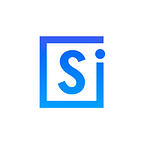How to Boost Average Purchase Size in Your Pharmacy by 30% just Adding Some IT
The pharmacy business, along with its profitability, has several complex aspects, which are sometimes difficult to settle. We mean the security of pharmacies (we wrote about this issue earlier), and the complexity of their promotion.
The problem of advertising and sales promotion in the pharmacy business has always existed — people go for medicines rather rarely, preferring to do this only by doctor’s appointment or it there an urgent need appears. Additional impulsive purchases are obviously out of the question.
Nevertheless, our client — one of the largest pharmacy networks — turned to us for the creation of an automatic sales promotion system with confidence that it would provide additional profit. Here is a story of how that turned out and about the project itself.
Getting Started
The main idea of the project was not new by her own: to create an automatic system for sales promotion and monitoring, composed of a special desktop application and several additional monitors at the tills of the pharmacy to display relevant commercial offers to the customers.
Such systems are already used in various business areas and they show great profit increase. The customer turned to us exactly with this idea, and we just had to come up with the logic of the program, create the software, and establish interaction with all the elements in the pharmacy: tills, monitors, analytics system and so on.
The development of the project began with the creation of a minimum viable product (MVP) version, which was released shortly after the had begun to work on the product. The MVP version had the minimum functionality needed for a successful market entry. It included the possibility to display the advertising banners to the customers and to customize these banners, as well as the time they were displayed.
After the release of the MVP version, we immediately began to work out the business logic of the product and add new functions: integration with tills, logs, a system of analytics and statistics for the optimisation of the advertising campaigns and conversion measurement. Let’s delve a bit into the technical part of the project.
Getting Technical
The project is a desktop application installed on the personal computer of sales staff in pharmacies. Such PC has two monitors — one for compilation of a check, payment, and so on, and the second one is just for displaying relevant advertising banners. Our application is automatically displayed on the second monitor, which is addressed to customers.
This is a .NET written application with the built-in Chrome browser. It works the way to automatically use files previously uploaded to the server. The server has uploaded content that includes:
- directories with photos of goods;
- file with goods info (product name, release form, price, etc);
- directories with various advertising banners;
- .zip archive with the new version of the application.
We automated the application as much as possible, thus, at the first launch on the PC the application:
- automatically registers itself in the autorun catalog of PC;
- creates all necessary directories;
- downloads the necessary content and updates.
Features of the Application
It may look like the application is quite simple, but in fact, there are many pitfalls and complex integrations inside that external “simplicity”. And they’re exactly the ones who help the pharmacies sell more, and not just random displays of intrusive advertising.
The application has two main operation modes:
- the idle mode (it displays certain content when the buyer is not nearby);
- the mode for displaying media plans (it displays content in the mode of interaction between the till and the application).
As soon as the customer approaches the till to make purchases, the media plan display mode begins working and the pharmacy staff can choose one of the “special modes” of the application, so that the relevant content starts being displayed on the second monitor:
- conversion goods, i.e. goods that are analogues to the selected product of the customer;
- resale goods, i.e. goods that may be added to the selected product of the customer;
- goods that participate in the “2 + 1” promotion;
- goods of the month;
- the customer’s purchase itself, as well as available payment methods.
It is important to mention that in all modes the composition of the shopping cart is shown to the user, including the list of goods, the price of each product, the total amount and the discount.
After the mode of displaying media plans, the application generates media dialogs in .json format, which are sent to the server and parsed into the database. Using these logs, the conversion is tracked afterwards, as well as the end performance results of various banners, offers, products and so on. After making a purchase, a customer takes the check, which displays special advertising banners and a Thank-You-Message. Check banners are also printed basing on relevant content.
Let’s Summarise
We have created the MVP version of the application quite quickly, enabling the client to begin testing the software and the whole sales boost system. After receiving a positive feedback from our client, we began to add new features to the application and combine it with other important elements of the pharmacy. The result was not long in coming — just in 3 months after the implementation of the system, the maximum growth rate of the average purchase size in the pharmacy network was recorded — it increased by 30%!
***
Read more about our complex automation system development: Business Automation: a Solution That Will Definitely Boost Your Reputation Management
Learn more about IT in medical care involvement and our approach: How to Improve Medical Сare Through IT Systems
Follow us on Medium! Never miss an article!
